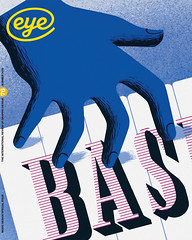Summer 2010
History repeats itself
The Story of Graphic Design
By Patrick Cramsie, Abrams, £40, Reviewed by Steven HellerJust when you thought the graphic design history market couldn’t be any more saturated – in the past six years alone, we’ve had books from French poster historian Alain Weill, design historian Roxane Jubert, Stephen J. Eskilson, Johanna Drucker and Emily McVarish – along comes The Story of Graphic Design by Patrick Cramsie.
One telling of history was decidedly not enough – and Philip Meggs received his fair share of criticism for particular omissions in his pioneering 1983 work A History of Graphic Design (some of which were rectified in later editions). But five tomes in six years is excessive. How many times can we read that William Morris’s ‘most celebrated book is The Works of Geoffrey Chaucer’? How much longer can Alfred Leete’s 1914 ‘Britons … Wants You’ and James Montgomery Flagg’s 1917 ‘I Want You for the US Army’ posters be compared? Haven’t we read already that ‘From the mid-1940s to the mid-1960s … magazine publishing and advertising were at their most fertile and frenzied in New York’? And is there anything left to be learned from the statement: ‘The final chapter in the story of Western graphic design is dominated by a single unifying technology: the personal computer or PC.’? These are more or less boilerplate in all the volumes.
So, this book by Patrick Cramsie, a graphic designer and reviewer for The Times Literary Supplement, while competently written, is simply saying the same old same old. Cramsie’s biographical notes state that while reviewing books ‘he felt the need to have a comprehensive history of graphic design that also served as an introduction to the subject’. What books was he reviewing? They couldn’t have been the four graphic design history books published since 2004, or the fourth expanded edition of Meggs published in 2005. Or could they? If Cramsie provided any new taxonomies, brought to light new pioneers or reproductions, there would be some point, but The Story of Graphic Design (are they trying to fool us by leaving out the word ‘history’) is as bland as the title – and as predigested as a cow’s cud. What’s more, it is not as well illustrated as any of the aforementioned books: almost all the images have appeared elsewhere, and there are too few of them.
The second biggest problem in a book of this scope is that there is not a single subhead – the text runs on and on without hierarchical breaks. There are novel chapter titles (‘Handmade and Homespun’) but there are old chestnuts too (‘Form and Function’). The absence of text entry points makes the navigation of ideas and concepts difficult for dipping in and out.
So who needs another graphic design history book? Perhaps the field is the richer for it. That is, if all the books provide unique and thought-provoking viewpoints. I’m afraid The Story of Graphic Design doesn’t fill that bill.
First published in Eye no. 76 vol. 19 2010
Eye is the world’s most beautiful and collectable graphic design journal, published quarterly for professional designers, students and anyone interested in critical, informed writing about graphic design and visual culture. It is available from all good design bookshops and online at the Eye shop, where you can buy subscriptions and single issues.

